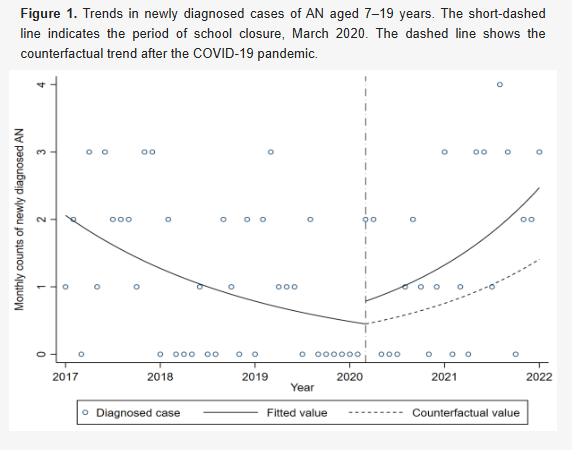March 18, 2024
The newly elucidated pathophysiological progression of Parkinson’s disease from examinations of the major salivary glands and the heart




Key Points:
- PD patients with sympathetic denervation in the major salivary glands and heart , as indicated by MIBG scintigraphy (Note 1), are older and have more severe non-motor symptoms, such as olfactory dysfunction, REM sleep behavior disorder, and autonomic nervous system dysfunction according to questionnaire scores, compared to groups with single sympathetic denervation or non-sympathetic denervation (Table and Figure ). However, cognitive function, duration of illness, and MDS-UPDRS motor symptom scores were comparable between the groups.
- In this study, a quantitative semi-automatic method developed by the research group last year was used to analyze MIBG uptake in the major salivary glands and heart. This comparative study of clinical symptoms focusing on peripheral organs in patients with PD, as highlighted in Ebina J, et al. J Neurol 2023, may provide a new perspective on disease progression.
- This study may contribute to understanding the pathophysiological progression of PD, leading to a more accurate staging of PD and enabling tailored medical care according to individual patient conditions. The research group is also examining the utility of novel adjunct diagnostic methods.


Table. Comparisons of clinical characteristics among the dual-sympathetic denervation (SD), single-SD, and non-SD groups
Presentation Overview:
PD is a progressive neurodegenerative disorder characterized by abnormal aggregates of α-synuclein known as Lewy bodies. Lewy bodies are not only found in the central nervous system but also in peripheral organs. In PD, cardiac sympathetic denervation detected by 123I-metaiodobenzylguanidine (MIBG) myocardial scintigraphy is associated with the presence of Lewy bodies. Conversely, although Lewy bodies are frequently found in the digestive tract, including in the major salivary glands, the process of pathophysiological progression in peripheral organs is unclear. A research group previously reported sympathetic denervation in the submandibular and parotid glands of patients with PD. Therefore, in this study, they hypothesized and verified whether patients with PD and sympathetic nerve dysfunction in the heart and major salivary glands have more advanced clinical symptoms.
Patients with PD with sympathetic denervation in both major salivary glands and heart areas (dual-SD group) were found to be older, have more severe olfactory dysfunction, and a higher likelihood of having REM sleep behavior disorder and severe autonomic nerve dysfunction compared to the single-SD group or non-SD group. However, the duration of illness and cognitive function were similar among the groups. Logistic regression analysis with age, sex, and duration of illness as variables showed that age was an important factor affecting clinical evaluation items in the progression of the disease.
In conclusion, patients with PD and decreased MIBG uptake in both the major salivary glands and heart areas exhibited a progression of symptoms centered around non-motor symptoms, suggesting that autonomic nerve dysfunction may progress independently of nigrostriatal dopaminergic degeneration. Furthermore, the potential contribution of age to the pathophysiological progression of PD was suggested. This study may aid in understanding the pathophysiological progression of PD and may be used for future staging of individual patients.
PD is a progressive neurodegenerative disorder characterized by abnormal aggregates of α-synuclein known as Lewy bodies. Lewy bodies are not only found in the central nervous system but also in peripheral organs. In PD, cardiac sympathetic denervation detected by 123I-metaiodobenzylguanidine (MIBG) myocardial scintigraphy is associated with the presence of Lewy bodies. Conversely, although Lewy bodies are frequently found in the digestive tract, including in the major salivary glands, the process of pathophysiological progression in peripheral organs is unclear. A research group previously reported sympathetic denervation in the submandibular and parotid glands of patients with PD. Therefore, in this study, they hypothesized and verified whether patients with PD and sympathetic nerve dysfunction in the heart and major salivary glands have more advanced clinical symptoms.
Patients with PD with sympathetic denervation in both major salivary glands and heart areas (dual-SD group) were found to be older, have more severe olfactory dysfunction, and a higher likelihood of having REM sleep behavior disorder and severe autonomic nerve dysfunction compared to the single-SD group or non-SD group. However, the duration of illness and cognitive function were similar among the groups. Logistic regression analysis with age, sex, and duration of illness as variables showed that age was an important factor affecting clinical evaluation items in the progression of the disease.
In conclusion, patients with PD and decreased MIBG uptake in both the major salivary glands and heart areas exhibited a progression of symptoms centered around non-motor symptoms, suggesting that autonomic nerve dysfunction may progress independently of nigrostriatal dopaminergic degeneration. Furthermore, the potential contribution of age to the pathophysiological progression of PD was suggested. This study may aid in understanding the pathophysiological progression of PD and may be used for future staging of individual patients.


Figure. Differences in clinical characteristics among the four groups of patients with Parkinson’s disease
Journal
Journal of the Neurological Sciences
Title
Clinical characteristics of patients with Parkinson’s disease with reduced 123I-metaiodobenzylguanidine uptake in the major salivary glands and heart
Authors
Junya Ebina, Sunao Mizumura, Harumi Morioka, Mari Shibukawa, Junpei Nagasawa, Masaru Yanagihashi, Takehisa Hirayama, Nobutomo Ishii, Yukio Kobayashi, Akira Inaba, Satoshi Orimo and Osamu Kano*
DOI No.
https://doi.org/10.1016/j.jns.2024.122932
Journal of the Neurological Sciences
Title
Clinical characteristics of patients with Parkinson’s disease with reduced 123I-metaiodobenzylguanidine uptake in the major salivary glands and heart
Authors
Junya Ebina, Sunao Mizumura, Harumi Morioka, Mari Shibukawa, Junpei Nagasawa, Masaru Yanagihashi, Takehisa Hirayama, Nobutomo Ishii, Yukio Kobayashi, Akira Inaba, Satoshi Orimo and Osamu Kano*
DOI No.
https://doi.org/10.1016/j.jns.2024.122932
READ MORE RESEARCH NEWS - MEDICINE
ACADEMICS
Undergraduate Programs
– Medicine
– Pharmaceutical Sciences
– Science
– Nursing
– Health Science
Graduate Programs
–Medicine
–Pharmaceutical Sciences
–Science
–Nursing
Undergraduate Programs
– Medicine
– Pharmaceutical Sciences
– Science
– Nursing
– Health Science
Graduate Programs
–Medicine
–Pharmaceutical Sciences
–Science
–Nursing
RESEARCH
– News
– Guidelines & Policies
– Support Offices
– Facilities
– Security Export Control
Non-Degree Programs
– Clinical Elective Program
– International Physician Observership Program




